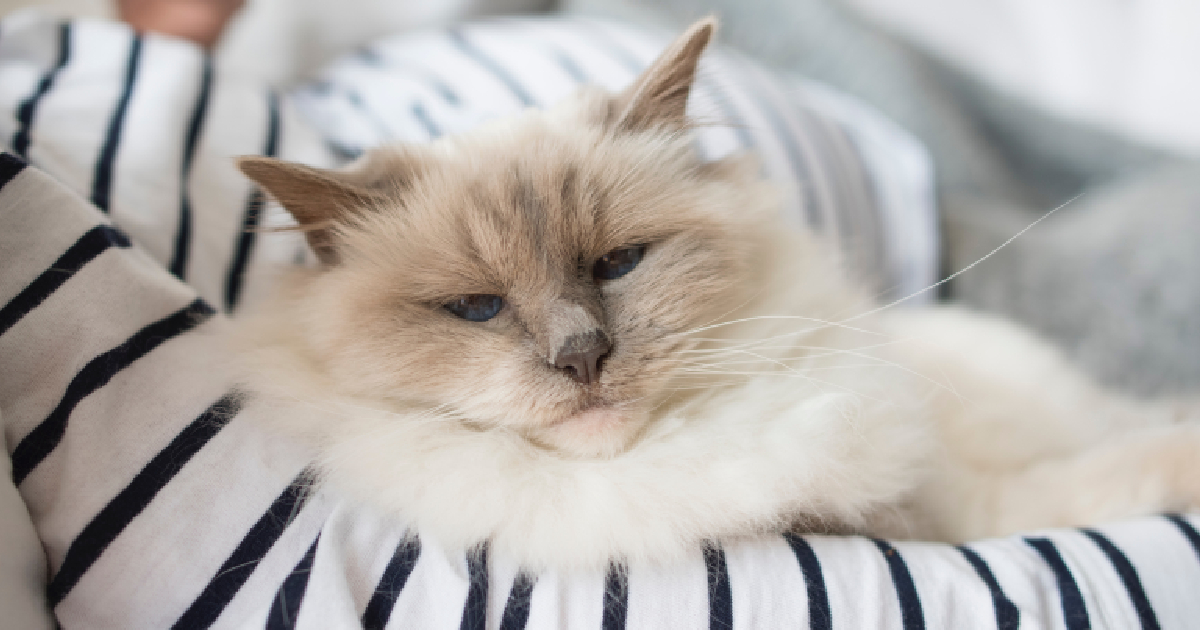Did you know Crème Puff the cat lived to be 38 years old?
It’s true! Born in 1967, Crème Puff lived a long life, padding through the decades until she died in 2005.
While we wish all cats could live as long as Crème Puff, we know it’s not always possible as the average life expectancy for cats is 12-15 years. Science Alert reports this average is up from “just over nine years in 1995.”
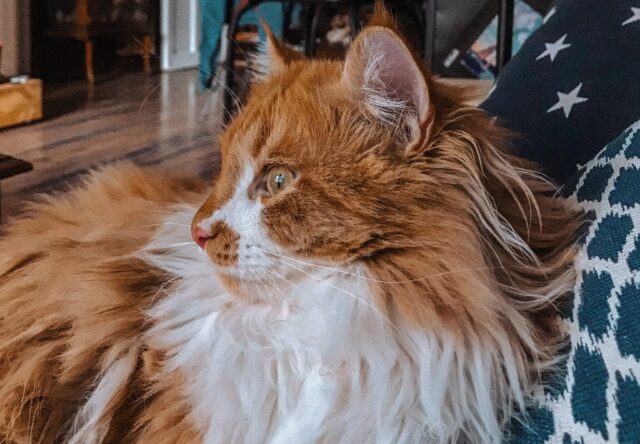
But the good news is more and more cats are now living to see their 20s thanks to good care and further advancements in feline medicine. In fact, studies show “roughly 20 percent of cats in the US are estimated to be 11 years or older.”
How Feline Aging Works
Let’s consider a 17-year-old cat. How old is that in human years?
According to Companion Veterinary Hospital, “To convert cat age to an equivalent human age, an accepted method is to add 15 years for the first year of life. Then add 10 years for the second year of life. After that, add 4 years for every cat year. This means that by year two, a cat has matured to about the same as a 25 year old human.
Meaning a kitty of 17 is roughly the equivalent of an 84-year-old human! Remember though, while all felines require medical care, good nutrition, and love, every cat ages differently.
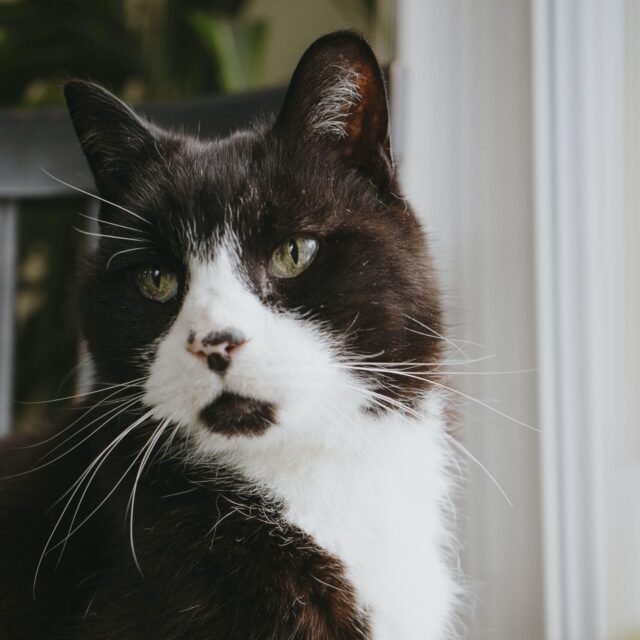
While no one has a crystal that can tell you when your cat might go, these signs do indicate a cat who’s living well and getting regular check-ups. We’ve done the research and surveyed some of the oldest cats we could find to learn what keeps their paws a-padding. Here’s what felines say are the signs your cat will live a long life.
13 Probable Signs Your Cat Will Live a Long Life
1. A Mind as Sharp as Kitty’s Claws
Is your cat keeping it together as she ages? Like people, cats experience memory lapses and moments of confusion as they settle into their elderly years. One study reveals just how common cognitive decline really is in felines.
“35% of owners of older cats between 11 and 15 years of age reported at least one sign of cognitive decline; this rose to 50% in cats over 15 years of age.”
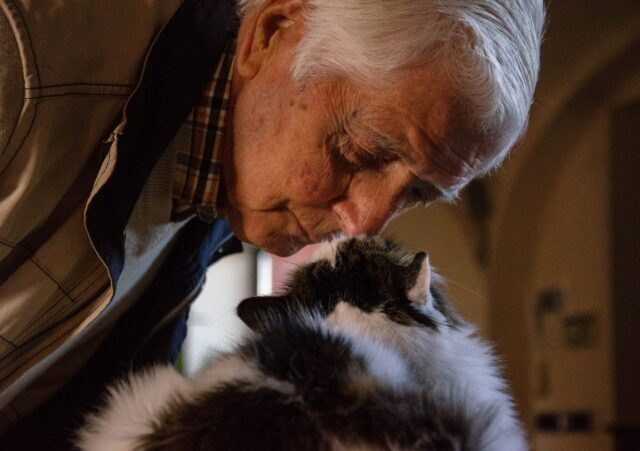
What are the signs of cognitive decline in cats?
Veterinarians and feline professionals use the abbreviated term DISHA to group the behavior issues seen in cats progressing into cognitive decline. Dr. Debra Horwitz and Dr. Gary Landsberg explain, “DISHA refers to Disorientation, Interactions that have been altered between pets and their family members or other pets, Sleep-wake cycle changes, House soiling, and Activity Level changes.” Anxiety issues are also part of the DISHA assessment.
2. Hungry Cats are Happy Cats are Healthy Cats
How’s your cat’s appetite? A cat that doesn’t want to eat is one that is not feeling his best. Cats love food. They love us because we give them food. So, a cat is who is eating a good, healthy diet and isn’t crazy cuckoo for food in between feedings, that’s excellent. If your cat maintains their good appetite as they approach the golden years, you can maybe take this as a sign your cat has a long life ahead of them.
If your cat has lost all interest in food and nothing whets his appetite, make an appointment with the vet.
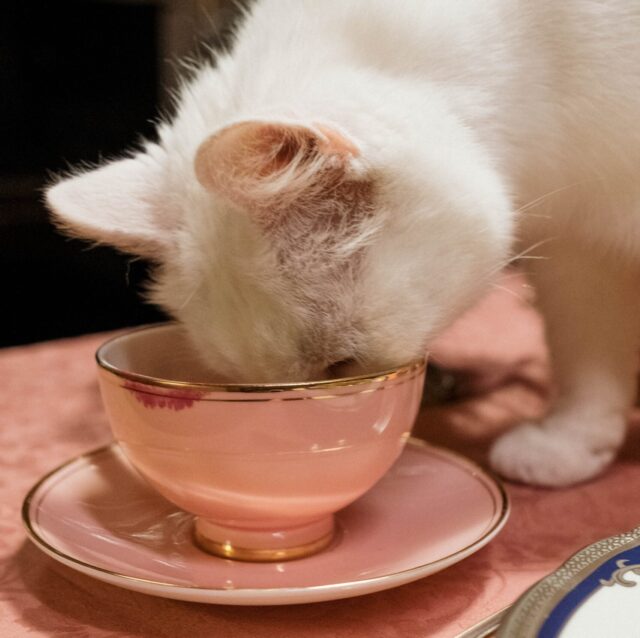
3. A Sleek Feline Physique
Maintaining an ideal weight goes right along with a healthy appetite. If a cat eats a balanced diet and keeps to plenty of play, it’s quite likely this feline will tip the scales at a healthy weight. And the longer cats maintain this balance of exercise and eating well, the better her chances at living to see her 20s.
No matter what your cat’s breed makeup, maintaining a healthy weight in felines is important for their health. Some cat breeds have a whisker up on long lifespans in their DNA, though. According to The Vet on Fourth, these 9 cat breeds are known for potential life expectancies of 17-20 years of age:
- Calico: 12 to 15 years
- Bengal: 14 to 16 years
- Persian: 10 to 17 years
- Burmese: 16 to 18 years
- Ragdoll: 15 to 18 years
- Siamese: 12 to 20 years
- Savannah: 12 to 20 years
- Russian Blue: 15 to 20 years
- American Shorthair: 15 to 20 years
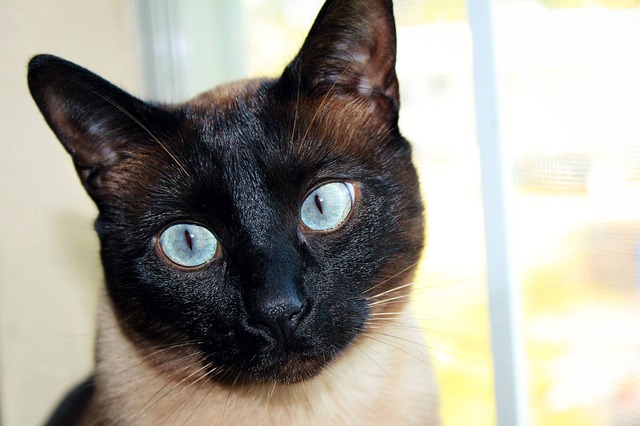
4. Mild-Mannered Meow Meow
The aging process in cats also comes with changes to temperament, but these won’t be drastic in such a way you’re left wondering who your cat has become. While not necessarily a sign of a cat’s life expectancy, mood changes can indicate a problem. Aloof cats may become clingy, while lovey kitties may crave distance and don’t mind telling you with hissing and swatting. Whether behavioral or medical, cats who experience mood changes not related to being an old, crabby cat should probably see their doctor.
5. Plenty of Play
Is your furry old-timer still spry? A senior cat who loves to play stands a good chance of living a long life. Play is an important part of staying healthy, so keep kitty in the toys! In your repertoire of feline entertainment, include activities in which kitty plays alone as well as toys you enjoy together, like shiny, dangly teaser wands. Though cats will slow down and require less activity in their elder years, they still need to move around. Encourage play to help felines keep fit, strong, and on their path to a long life.
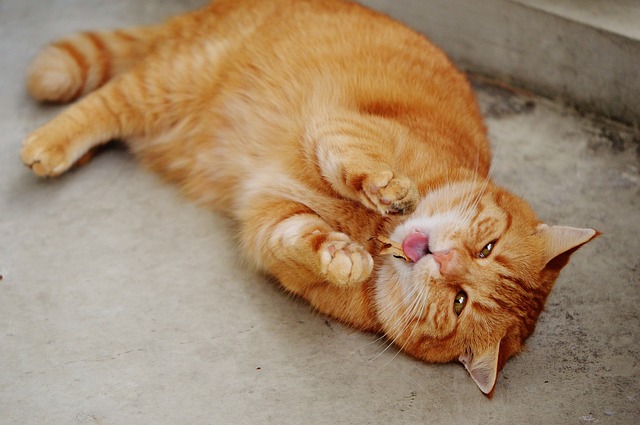
6. Just the Right Amount of Cat Napping
Monitor your cat’s sleeping patterns throughout his life and make sure he’s getting the right amount of sleep for his age. Too much sleep can be just as big a problem as not enough sleep. Dr. Laci Schaible shares that a common problem among restless senior cats is hyperthyroidism, which can cause “a cat’s metabolism to increase to the point where she burns off too much bodyweight despite a ravenous appetite. It also makes her have unusual amounts of energy, and therefore she doesn’t get the necessary sleep her aging body needs.”
But on the other hand, too much sleep might also be a sign of something off in your cat.
“Any time a cat experiences illness or pain, she may retreat to hide this ‘vulnerability,’ and spend more time sleeping.”
If your cat’s sleep pattern seems to be changing, monitor him for any other signs of a problem.
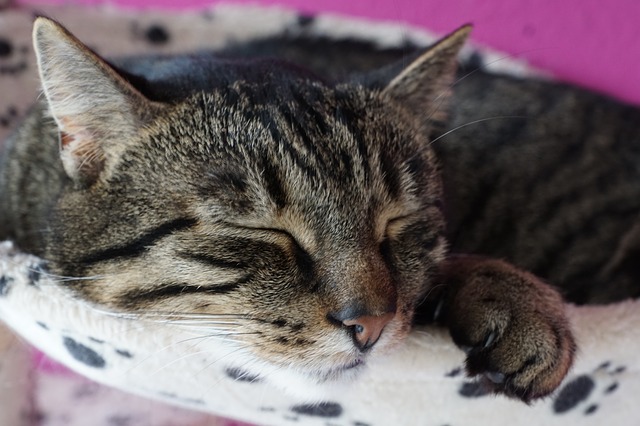
7. Pearly White Teeth
How are your cat’s teeth as she’s aging? Are they pearly white and set firmly in healthy pink gums? These clean chompers might serve as a good sign your cat will live a long life.
Dental disease is common in older cats, ranging from thickening of the teeth to tooth loss. One dental problem which can cause oral pain, bleeding, and drooling in cats is a condition known as feline tooth resorption. For reasons unknown, the hard tooth material dissolves away, exposing roots and nerves. You may not even realize your cat is experiencing this issue until it’s far progressed, making it important to include oral care in your home routine as well as your vet care in order to catch issues early.
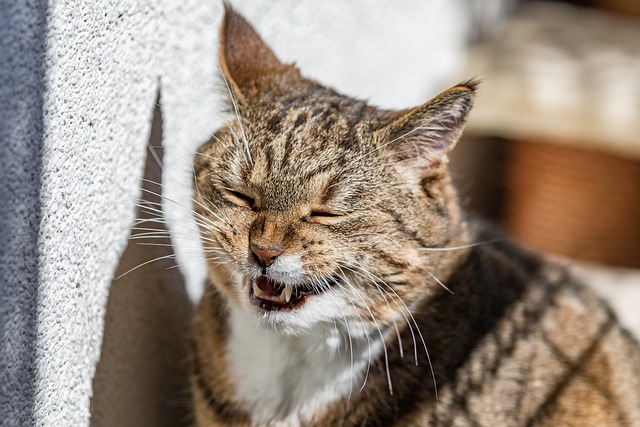
Keep scrolling for more signs your cat will live a long life. Bet you can already imagine your kitty as an old-timer of 20 who loves sunshine, naps, and hugs from you!
8. Strong Sensibilities
As skilled hunters, cats have excellent senses. But like humans, feline senses can lose their acuity over time. For example, feline eyes start to show their age when the pupil takes on a cloudy tint of bluish-gray known as lenticular sclerosis. Dr. Marty Becker assures this change occurs as part of normal aging in the eye. He also explains the fog develops when “new fibers form on the surface of the lens, and the lens starts to lose moisture as the years go by.”
Not usually occurring until around ten years of age, lenticular sclerosis needs no treatment as it causes no pain and no vision loss “unless the cat lives to be very old.”

9. Looking Their Finest
Is your cat the queen of clean fur? Does she groom herself to purrfection even as she ages into an older cat? That’s a good sign your cat is on track to live a long life.
Cats who aren’t in tiptop shape might give up grooming practices due to the discomfort it causes. Illnesses can cause disinterest in grooming, while obesity can hinder a cat’s natural flexibility. And for senior cats, arthritis can create mobility issues which might impede a cat from proper cleaning because of pain.
If you notice signs of poor grooming in your cat, such as greasy or oily fur, odor, and an unkempt appearance, you might want to have a chat with the vet to explore the possible causes behind this behavior change. The same goes if you happen to notice your cat overgrooming. Both untreated illness and unchecked obesity can lead to overall poor health in felines, which can certainly shorten a cat’s life expectancy.
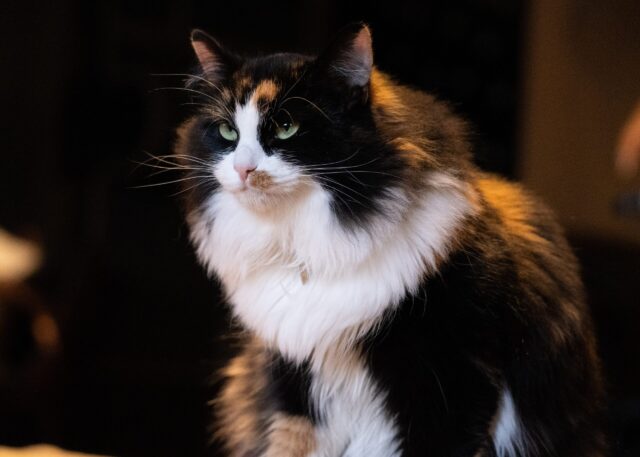
10. Shades of Gray
While it’s not uncommon to see aging dogs turn gray, you might never see your cat go silver with time. Dr. Marcus G. Brown, a DVM with Capital Cat Clinic in Arlington, VA, explains cats are thought to “have more melanocytes [cells that produce pigment in skin and hair] than dogs.”
Thanks to the excess pigment cells, cat fur doesn’t typically turn gray until a cat is quite advanced in age. So, if your colorful cat has faded, she’s already achieved old age!
“Cats are very old when they gray, usually around the age of 17.”
And what about whiskers? Any signs your cat will live a long time looking at those wispy vibrissae? Not really, but you may notice their color change from white to black as kitty-dear ages.
11. How’s it Hopping?
Cats are impressive in their ability to leap great distances and heights. But older cats who feel pain or weakness tend to avoid jumping. So, while again not a definitive answer, your cat’s jumping abilities could be a sign of a long life. Think about it; if your 17-year-old cat can still hop from the floor to the kitchen counter with grace and ease, then she is doing alright!

12. Inside for a Long Life
If your kitty lives the indoor life, then good news! You’ve already helped him on his way to living a long life. The walls of your home provide a safe haven from other animals, strangers, and traffic encounters. By keeping kitty an indoor cat, you also help him avoid parasites and harmful substances.
The Clinical Animal Behavior Service Program of the UC Davis School of Veterinary Medicine reports, “Statistics show that indoor cats lead longer, healthier lives than outdoor cats. Indoor cats live on average 10-15 years, while outdoor cats live on average 2-5 years.”
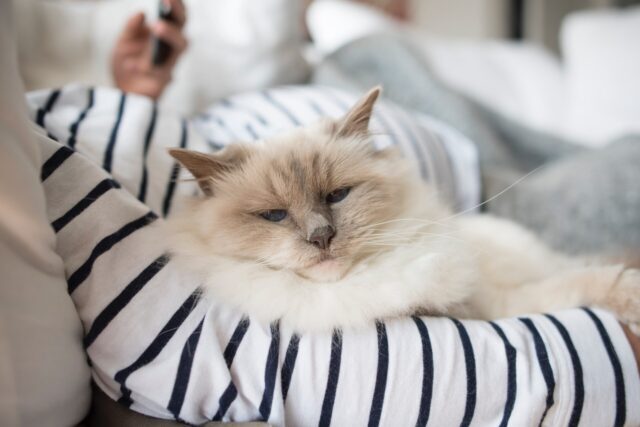
If your cat insists on outside time, ensure his safety with microchipping, collar and ID tag, and vaccinations. Or, train your cat to wear a harness and leash, or consider providing the kitties a catio!
Check out these Catrageous Ways Your Cat Can Enjoy The Outdoors Safely for more ideas.
13. Basking in Your Love
While your love is not a magical elixir guaranteeing your cat will live a long life, it sure helps! Giving our cats the love they deserve means more than kisses and catnip. Be sure to familiarize yourself with your cat’s habits, keeping a watchful eye out for any changes, and help your cat stretch his lifespan to impossible lengths!
